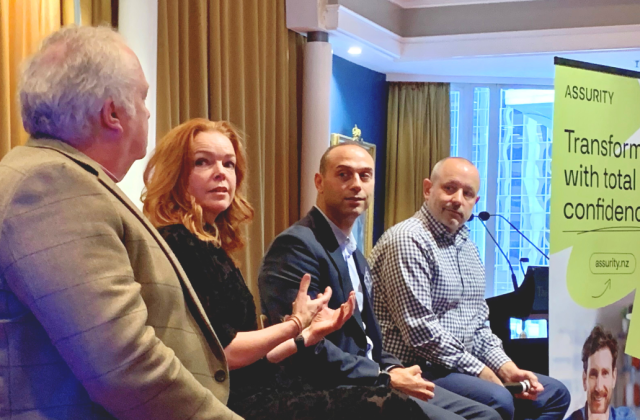Date: 26 April 2022
It does not matter if the project is delivering a civil project, CCTV and security, or software - they often fail or underdeliver for organisations. As a general consultant, I get to work on a wide array of projects and observe what works and what does not. There is often a cluster of undesirable situations that cause these failures, let’s look at some of them.
Too many leaders, not a lot of progress
Poorly focused projects with too many leaders are often out of control. They are busy projects that consume resources for very little benefit. The actual delivery teams are overwhelmed by divergent and frequently changing requirements. All this does is create stress, friction, confusion, and delays in the project. In some cases, it can cause you to lose key valuable team members at the exact moment you need them due to stress and frustration.
Great plan where are the details?
A grand project vision is a great way to get investment in a project. This needs to be converted into a realistic deliverable. There is a need to build solid use cases based on value to the organisation to help guide the delivery team in choosing the right technology solutions and treatments.
Use cases help project teams focus on delivering a solution that delivers what the organisation needs and gives the most value to it. This allows for the selection of the correct technology solutions, security treatments, and infrastructure that deliver what is required is critical. Often no amount of adjusting or tweaking can fix an incorrect choice and can get the desired results. These can add unnecessary costs and friction to your business. An example could be an IT team delivering off-shelf Microsoft products for reporting to save budget rather than an enterprise reporting solution as they do not have use cases to understand your reporting needs. In Security space installation of incorrect technology that can not perform the required tasks.
This applies to all projects. Good use cases help us focus on the value-add propositions, focusing resources to deliver better and faster solutions. Often freeing resources quicker for other projects
Playing it safe, using trusted go-to people
Using familiar suppliers’ rather than going to market to get the right solution can end up with the wrong solution. It is all too easy to rely on our trusted networks and suppliers to solve our organisational needs. Whilst this could assist in quick solution sometimes due to low friction, is it the right solution? Do your suppliers have the most relevant solutions for your needs?
If your organisation has a new requirement, it is better to open the market, and then choose the right solution for your needs. The worldwide markets and technology solutions are moving faster and faster, with organisations needing to change to survive. Sadly, our existing suppliers my not have the best solutions for our needs currently.
Are you following your own vision or your competitors’?
Are you following your competition or following your own destiny? Is your project delivering something to chase your competition? If so, you really need to question whether it is adding value to your business and is aligned with your business plans?
It is all too easy to chase your competition and not gain the best value from the investment and project resources. These projects often divert resources from projects that could be used to differentiate your organisation from the rest. It is important to invest resources in projects that drive the business towards its aims and vision.
I just want that toy, make it so
My personal favourite, the senior executive just went to a conference and saw this awesome technology and we must have it. They will not let the fact is expensive, has no strategic benefits, and is not compatible with existing systems get in the way of implementing it.
These projects can consume vast project and operational resources and are maintenance heavy once operational often. They can be a big distraction and take resources from more important projects.
Putting a square peg in a round hole
Some systems are not compatible, a classic example is Apple versus Microsoft. They do the same thing, but no software can be shared between them. Implementing software or solutions that are not compatible with the technology stack in your organisation is doomed to fail. You are better to find an alternative that is compatible.
Thinking too small and doing it twice
We often see companies choose to invest too much in small proof of concepts and try to operationalise them, only realise they are not fit for purpose. They then must do a second project to do it right. POCs have their place, but if you are planning on keeping a system it is important you invest sufficient resources to get a working solution this will work for the business for the short to medium term.
Shooting for the stars and burning out
These projects frequently have grandiose names like Project Mars and aim to solve all the organisations needs in one go. This often results in project failures with organisations ending up with nothing to show from significant investments. Normally the projects plan to do too much and run out of money before it delivers anything of value. As with going too small, you often must invest in new projects to get the results you actually need.
Running before you can walk
Being realistic about the size of your organisation and technical ability is important. Smaller organisations with a basic technology stack can attempt to install advanced solutions with no technical resources to install and maintain them. This will result in project failure and little to show from the investment.
In summary…
The situations above don’t seem too serious in themselves. Sadly, we see these come in clusters for example an organisation with too many leaders and grand plans with ultimately results frequently in project failures.
A more important consideration of these situations is how it affects your people. The organisations I saw these situations in had a very high employee churn rate. One client lost 90% of the IT department due to much business interference causing stress on the team. Even if you don’t lose people, team members in projects with the above problems are often not happy and highly stressed. It creates an adverse working environment for everyone, which is not productive.
No organisation has unlimited resources. Having propriety-sized projects that deliver to prioritised actual business needs can often reduce the occurrence of the above situations.
This article first appeared in the April/May 2022 issue of the New Zealand Security Magazine.














